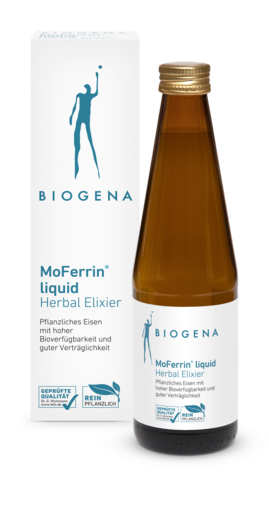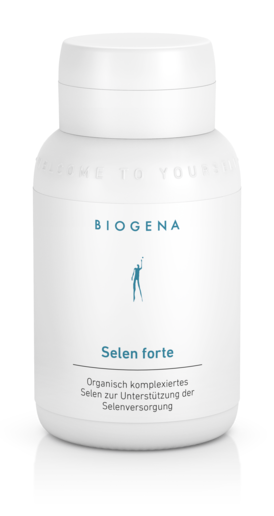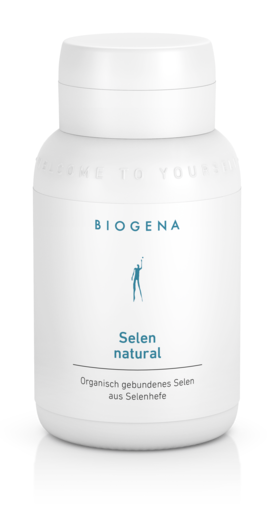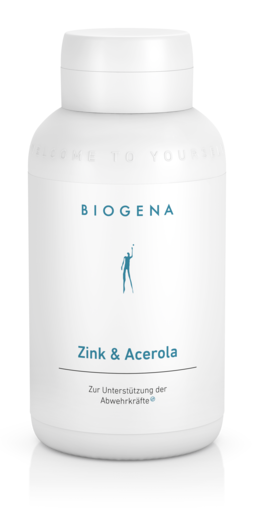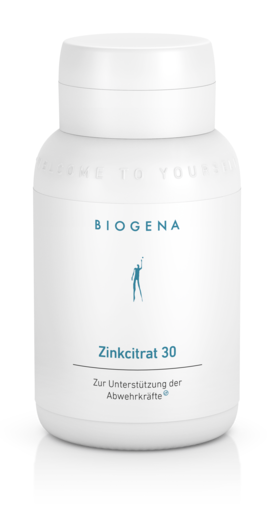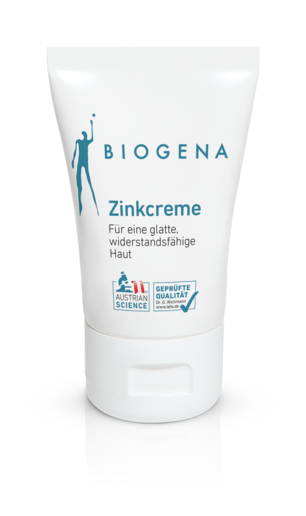
Essential trace elements in the human body
- Chromium (Cr)
- Cobalt (Co)
- Iron (Fe)
- Iodine (I)
- Copper (Cu)
- Manganese (Mn)
- Molybdenum (Mo)
- Selenium (Se)
- Silicon (Si)
- Zinc (Zn)
These trace elements are called essential because their absence in the body can lead to dysfunctions in the organism.
Small quantities – large role. The following trace elements are referred to as essential. As the name suggests, we need them – even if only in small quantities – for the body to function
Iodine/iodine
Essential for the thyroid hormones: The trace element iodine plays an important role in the thyroid gland as a component of the thyroid hormones. The thyroid gland controls a variety of bodily functions via the thyroid hormones. Hormones affect not only the oxygen and energy metabolism throughout the body but also the metabolism of many hormones and they also regulate heat management. They also control organ development and the growth and metabolism of proteins and fats. Important natural sources of iodine in the diet are primarily fish and seafood. The need for the trace element, which is essential for the mental development of the unborn child, increases particularly during pregnancy.
Iodine is mainly found in fatty marine fish such as turbot. Marine algae, such as kelp, are plant-based sources of iodine.
Manganese
Trace element for the bones: Manganese is an essential trace element, which is contained in the body in very small quantities compared to other essential micronutrients. Despite its low incidence, manganese plays an important role in numerous metabolic processes. This means that manganese is needed to maintain normal bones and normal energy metabolism. In addition, manganese, as a component of the antioxidant enzyme SOD (superoxide dismutase), contributes to the protection of the cells against oxidative damage by free radicals.
Manganese is contained in both animal and plant tissues – however, it is the latter that is considered to be manganese-rich.
Chromium
An important trace element of sugar metabolism. Chromium is an essential trace element that plays an important role in the body's sugar metabolism. After eating, the glucose obtained from carbohydrates is transported into the cells. Insulin is necessary for this process. However, chromium also plays an active role in this process and thus contributes to maintaining a normal blood sugar level. Various circumstances can lead to an increased need for this trace element. Chromium is particularly important in a typical Western carbohydrate-rich diet since it plays a role in the usability of macronutrients (e.g. carbohydrates and fats). Increasing age or a high sports workload can also increase the daily chromium requirement.
Notable amounts of chromium are found primarily in calf's liver, beer yeast, and wheat germ, but also in whole-grain products and meat. In contrast, fruit and many vegetables are generally considered to be rather low in chromium.
Molybdenum
Important for the metabolism of proteins containing sulfur. Molybdenum is a little-known trace element that is involved in the natural metabolism of amino acids in the human body that contains sulfur. Since molybdenum cannot be formed by the body itself, it is one of the essential trace elements that must be obtained regularly from food. Foods such as beans, leafy vegetables, nuts, or liver are particularly rich in molybdenum. In addition, drinking mineral water or hard tap water can also contribute part of the daily molybdenum supply.
Foods that are particularly rich in molybdenum include beans, leafy vegetables, nuts, and liver. Additionally, drinking mineral water or hard tap water can also contribute to the daily supply of molybdenum.
Selenium
Selenium was discovered in 1818 by the Swedish chemist Berzelius. Because of its silver-grey shine, it was named after the Greek goddess of the moon, Selene. Selenium is a component found in many enzymes and proteins. Among other things, selenium plays a role in the regulation of thyroid gland metabolism, supports the maintenance of normal hair and nails and – as a component of the antioxidant network – contributes to the protection of cells against aggressive molecules, the so-called "free radicals".
Selenium is largely found in proteins, so foods rich in selenium include meat, fish, offal and nuts. The selenium content of Brazil nuts is particularly outstanding, providing approx. 70 to 90 µg of selenium per nut.
Zinc
In addition to iron, zinc is the second most common trace element in the body and is required for numerous biochemical processes. Zinc is important for the normal functioning of our immune system and it also helps protect our cells from oxidative stress. In addition, many cell functions are affected by zinc. It is a component of many enzymes, regulates the hormone balance and is part of the synthesis of proteins and DNA components. It is also involved in cell growth and cell differentiation.
For humans, animal-based products are of particular importance for the supply of zinc. For one thing, they usually contain higher concentrations of zinc; for another, the bioavailability of zinc from animal-based sources is also higher. Plant-based sources of zinc include spinach, oats, wheat germ and whole-grain products.
Copper
Copper is one of the lesser-known trace elements. It is a component of numerous enzymes and is involved in many different metabolic processes. Copper, for example, plays a role in the formation of connective tissue, iron transport in the body, and nerve and energy metabolism. However, it also contributes to normal immune functions and contributes to the body's antioxidant protection system. Copper supply can be impaired by the long-term intake of higher amounts of zinc. Copper and zinc compete for absorption into the body. Therefore, sufficient copper intake should be ensured in the case of long-term zinc administration.
Iron
After oxygen, silicon, and aluminum, iron is the fourth most common element on the surface of the earth at about 5%. It is present in the human body at a concentration of 50 to 60 mg per kg body weight, which corresponds to a total amount of 3.5 to 4 g iron in a person weighing 70 kg. Iron is a component of red blood cells and is required by the body for blood formation and oxygen transport. The immune system is also dependent on sufficient amounts of iron.
Iron is certainly the most prominent trace element, as an under-supply is very common. Around 20% of women of childbearing age are under-supplied. It is therefore all the more important and sensible to find out more about the topic. Veal, pork liver, pulses, and oats, for example, are considered to be rich in iron.
Other trace elements occur in the body, but it is not clear whether they are essential. These include arsenic, nickel, vanadium, and tin.
Other elements such as magnesium, calcium, sodium, potassium, and phosphorus, in contrast, are required in larger quantities in the body. They are usually referred to simply as minerals, sometimes also as bulk elements. The different designation therefore simply depends on the amount to which the human body needs the element.
Nutrient analysis
To get to know your micronutrient status or your supply of trace elements in more detail, a laboratory test is essential. Micronutrients can be detected in the body via two blood tests. On the one hand, serum can be tested, and on the other hand, also the whole blood.
Especially in older people, this type of nutrient analysis often detects deficits in the area of trace elements, as we learn in the video.
After the laboratory analysis, you will learn more about your blood values and whether there is an under-supply in any area.









